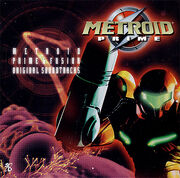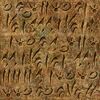PeabodySam (talk | contribs) No edit summary |
CortexCPU242 (talk | contribs) No edit summary |
||
| Line 7: | Line 7: | ||
'''{{Nihongo|Prologue|プロローグ}}'''<ref>''[[Metroid Prime & Fusion Original Soundtracks]]''</ref> is a theme in ''[[Metroid Prime]]''. It was composed by [[Kenji Yamamoto]]. |
'''{{Nihongo|Prologue|プロローグ}}'''<ref>''[[Metroid Prime & Fusion Original Soundtracks]]''</ref> is a theme in ''[[Metroid Prime]]''. It was composed by [[Kenji Yamamoto]]. |
||
| − | It is heard at the beginning of the game, as [[Samus Aran]] is landing her [[Gunship]] on the [[Frigate Orpheon]]. The theme begins slow, before breaking into a partial remix of the [[Theme of Samus Aran, Space Warrior]] when Samus's Gunship appears. The theme ends a few seconds after Samus steps out onto the [[Exterior Docking Hangar]], and leads into her [[Samus Aran's Appearance Fanfare|Appearance Fanfare]]. After this, she becomes playable for the first time in 3-D. On the soundtracks, the appearance fanfare is merged into the Prologue track, while also appearing as a separate track. |
+ | It is heard at the beginning of the game, as [[Samus Aran]] is landing her [[Gunship]] on the [[Frigate Orpheon|Frigate ''Orpheon'']]. The theme begins slow, before breaking into a partial remix of the [[Theme of Samus Aran, Space Warrior]] when Samus's Gunship appears. The theme ends a few seconds after Samus steps out onto the [[Exterior Docking Hangar]], and leads into her [[Samus Aran's Appearance Fanfare|Appearance Fanfare]]. After this, she becomes playable for the first time in 3-D. On the soundtracks, the appearance fanfare is merged into the Prologue track, while also appearing as a separate track. |
The Prologue remix of Theme of Samus also plays briefly in the [[Special Ending]] of ''[[Metroid Prime 2: Echoes]]'' as Samus’s gunship is leaving [[Aether]]. This version starts with the Theme of Samus, and then transitions to a low choir singing [[The Luminoth]]. |
The Prologue remix of Theme of Samus also plays briefly in the [[Special Ending]] of ''[[Metroid Prime 2: Echoes]]'' as Samus’s gunship is leaving [[Aether]]. This version starts with the Theme of Samus, and then transitions to a low choir singing [[The Luminoth]]. |
||
Revision as of 08:15, 28 October 2018
| This article is written from the Real Life point of view |
This article's name is an unofficial translation from official Japanese media
and may not represent the canonical English name, if one exists.
An alternate name from an official source may be required.
- This article is about the theme from Metroid Prime. For the theme from Samus Returns, see Theme of Samus Aran, Space Warrior.

Prologue (プロローグ)[1] is a theme in Metroid Prime. It was composed by Kenji Yamamoto.
It is heard at the beginning of the game, as Samus Aran is landing her Gunship on the Frigate Orpheon. The theme begins slow, before breaking into a partial remix of the Theme of Samus Aran, Space Warrior when Samus's Gunship appears. The theme ends a few seconds after Samus steps out onto the Exterior Docking Hangar, and leads into her Appearance Fanfare. After this, she becomes playable for the first time in 3-D. On the soundtracks, the appearance fanfare is merged into the Prologue track, while also appearing as a separate track.
The Prologue remix of Theme of Samus also plays briefly in the Special Ending of Metroid Prime 2: Echoes as Samus’s gunship is leaving Aether. This version starts with the Theme of Samus, and then transitions to a low choir singing The Luminoth.
The theme from Metroid Prime can be heard here: [1]. The theme from Echoes can be heard here: [2]
Trivia
- The beta version of Prologue from Metroid Prime sounded softer and more somber in tone: [3]
- This theme was originally accompanied by a female narrator recounting the Zero Mission "10 years ago" and Samus's detection of the Orpheon distress signal. This voiceover is unused, but still accessible in the internal files. The original PAL and New Play Control! versions of Prime accompany the Prologue with a male narrator (voice actor unknown) speaking about the legend of Samus Aran.

